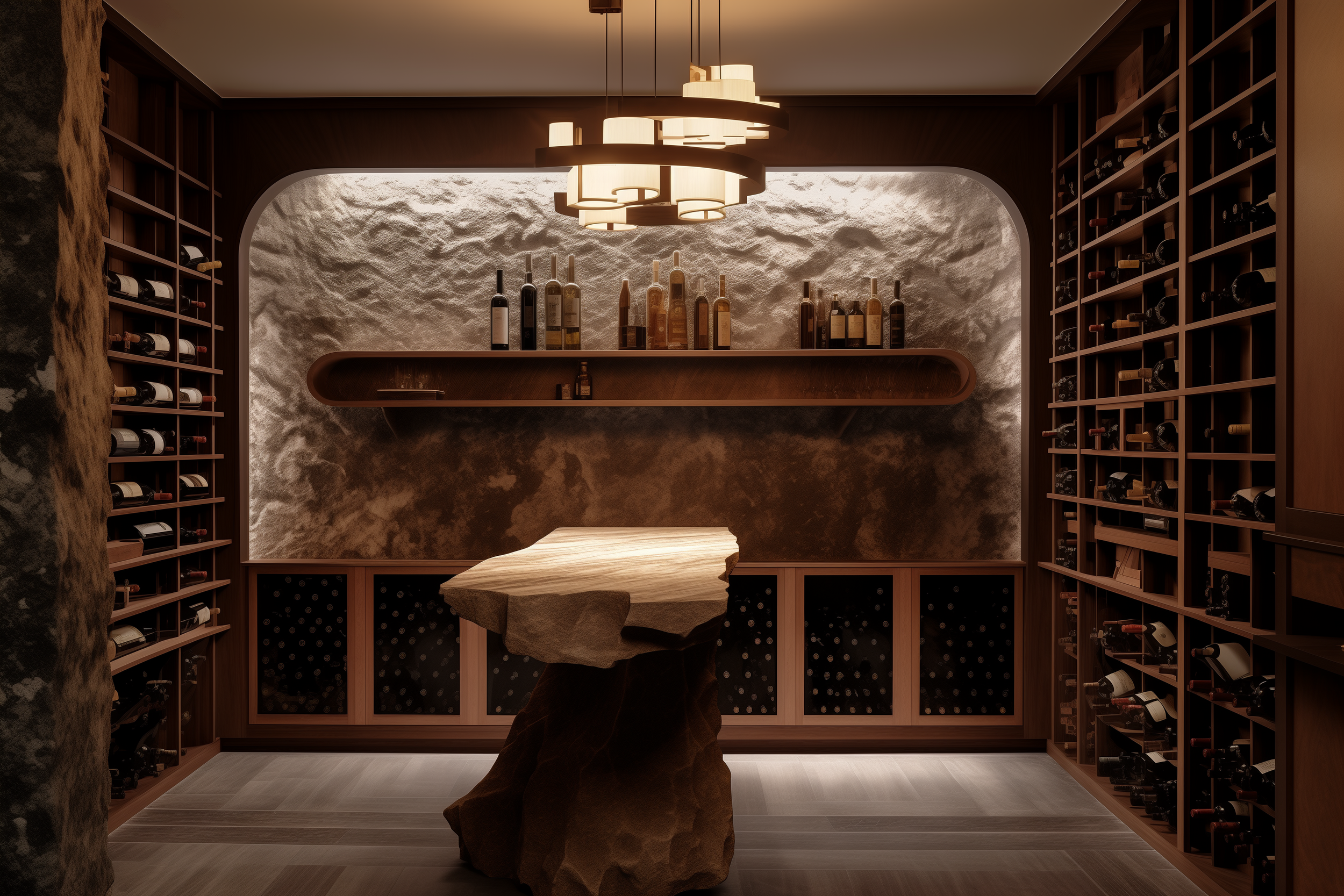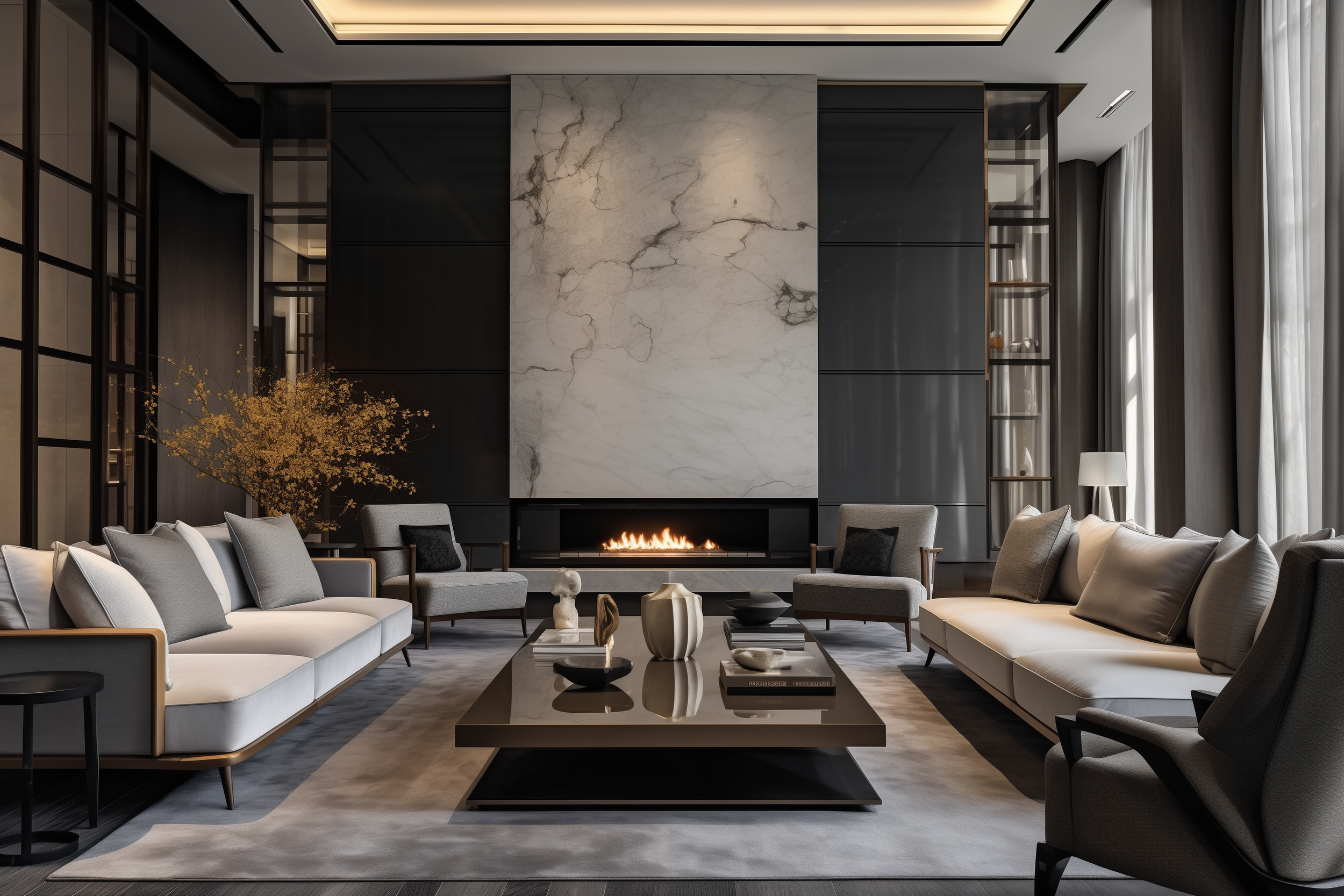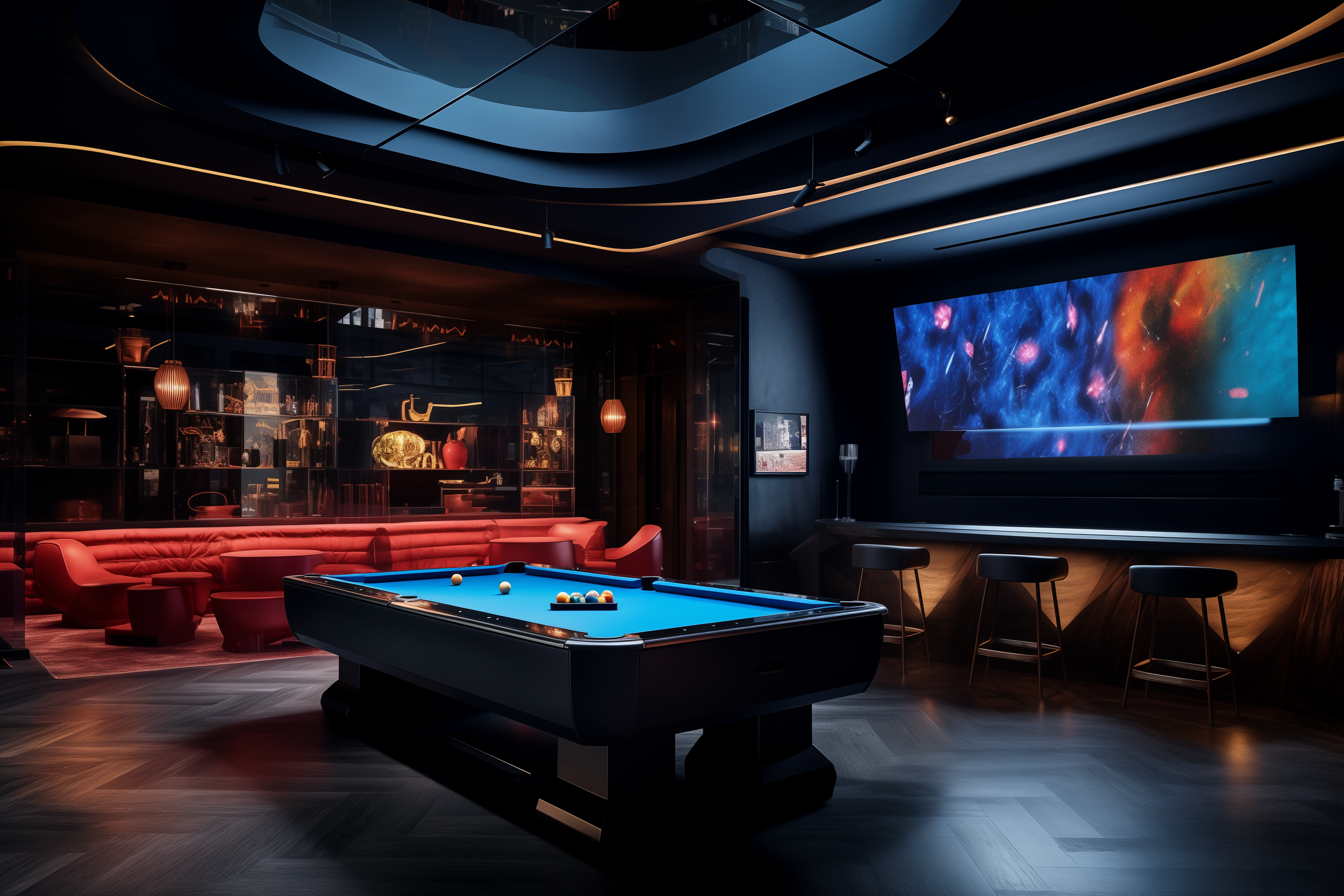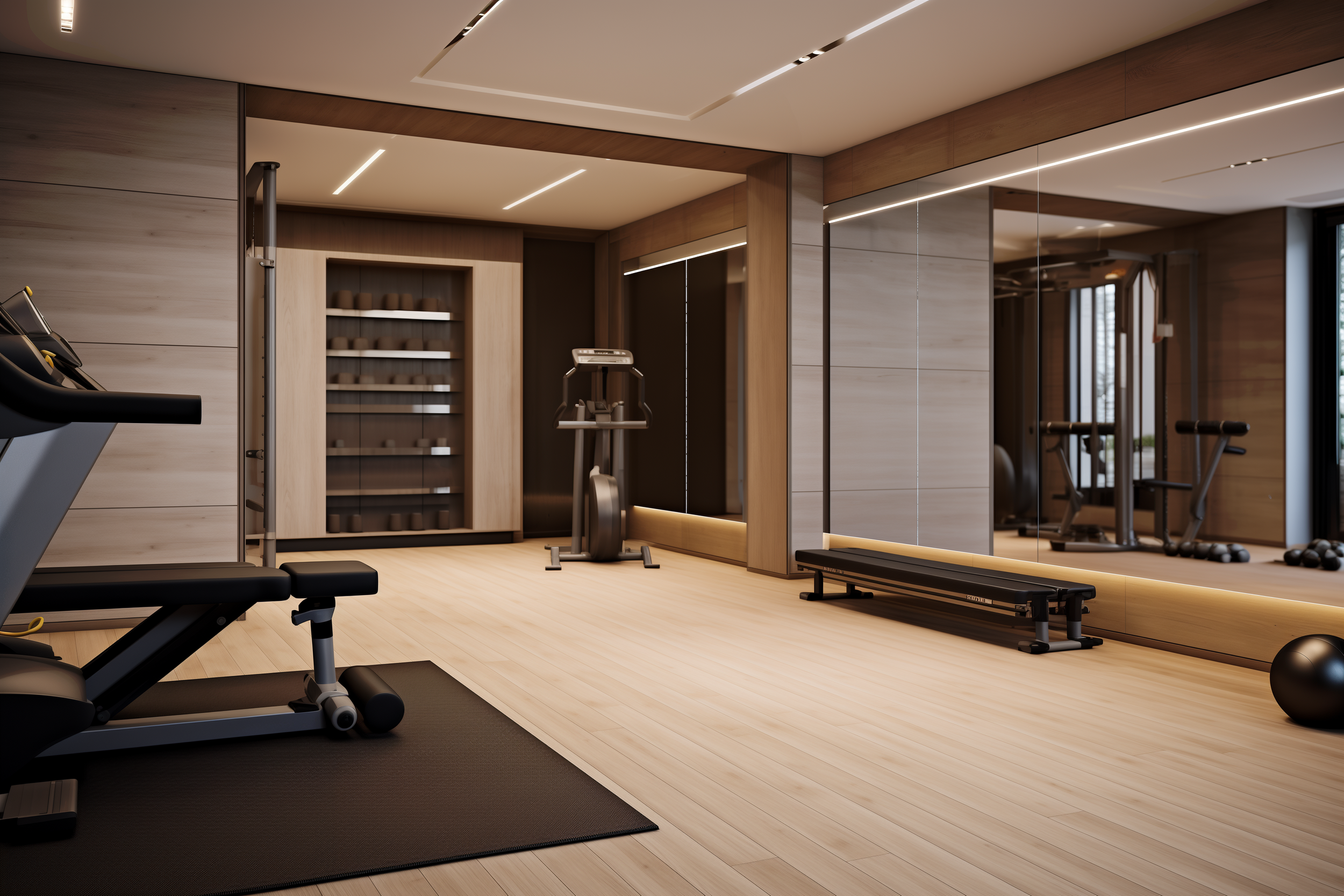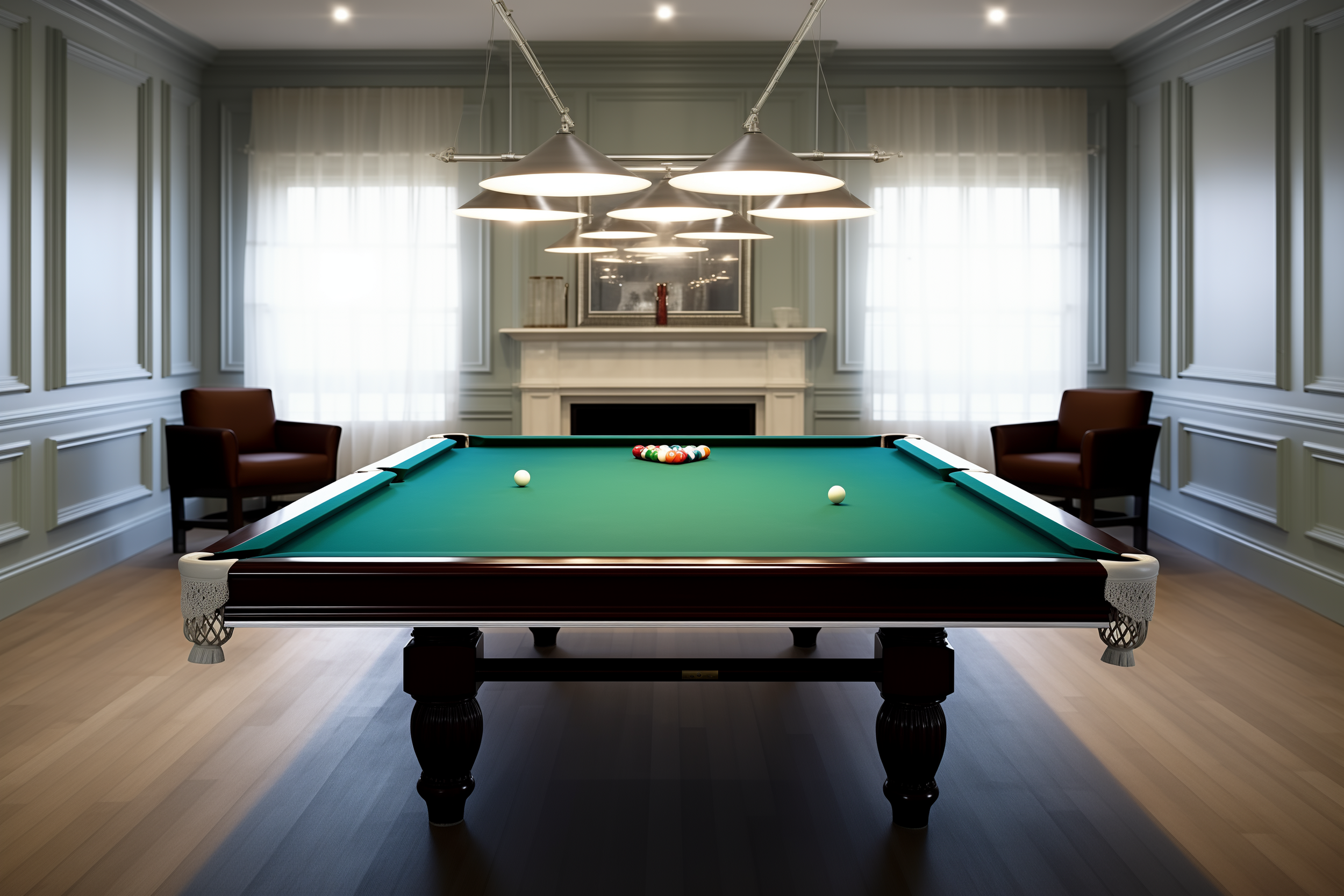Delving into Hospitality Interior Design: Innovative Approaches to Clubhouses and More 走進會所:探索款待行業的室內設計
Hospitality interior design is a niche that requires a deep understanding of both aesthetic principles and the specific needs of various types of gathering spaces. In this article, we delve into unique considerations for designing spaces such as wine cellars, lounges, KTV rooms, mahjong rooms, and gyms.
The wine cellar is adorned with stone paneling, creating a rustic and elegant atmosphere. by INHK Interio Design
Wine Cellars
For a wine cellar, the design challenge is to create a space that marries style, climate control, and storage organization. Consider incorporating features like a vintage-view wine wall, which not only optimizes space but also turns the wine collection into a visual masterpiece. For smaller spaces, a spiral cellar could be an innovative solution. This design uses the earth's natural insulation to provide ideal conditions for wine storage, even without a dedicated room.
Cozy and inviting atmosphere with a touch of elegance is created in this lounge. by INHK Interio Design
Lounge Design
Lounge spaces are all about creating an atmosphere that encourages interaction and relaxation. Rather than just focusing on comfortable seating, consider creating 'zones' within the lounge. This could include a quiet reading corner with book-filled shelves, a communal area with a statement fireplace, or a more intimate space with lower lighting and cozier seating. Consider incorporating tech-friendly elements such as wireless charging points and soundproofed sections for phone calls.
KTV room with its billiard table perfect for a night of fun and entertainment. by INHK Interio Design
KTV Design
Designing for sound is a unique challenge in KTV rooms. To ensure superior acoustics, consider investing in diffusers which scatter sound waves, reducing echo and improving sound quality. Additionally, use sound-absorbent materials such as foam or fabric wall panels to further enhance acoustics. For a futuristic touch, an interactive LED dance floor can elevate the KTV experience.
Mahjong room is adorned with elegant Chinese decorations. by INHK Interio Design
Mahjong Room
For mahjong rooms, consider ergonomics. Adjustable chairs can provide comfort for hours of play. A custom mahjong table with a recessed center can reduce reach and make play more comfortable. For a unique touch, consider designing a feature wall with mahjong tile art or traditional Chinese calligraphy.
The light color scheme creates a bright and energetic atmosphere. Design by INHK Interior Design
Gym Room
In a gym, layout is key. Consider the flow of movement and place equipment accordingly to reduce congestion during peak hours. Use biophilic design principles to incorporate natural elements; studies suggest that views of nature can improve workout enjoyment and reduce perceived exertion. For a high-end touch, consider an interactive digital wall for workout classes on demand.
The cozy ambiance is enhanced by the elegant molding on the walls. by INHK Interior Design
Conclusion
Hospitality interior design requires a deep understanding of the purpose of a space and the needs of its users. By considering innovative solutions and focusing on the unique requirements of each type of space, designers can create hospitality spaces that offer a truly memorable and enjoyable experience for guests.
在款待業的室內設計中,要專注於理解美學原則和特定聚會空間的需求。本文將探討設計會所內各種特定空間時需要考慮的因素。
酒窖
酒窖的設計要創造一個既有風格、又能維持適宜存酒的氣候條件、並具有條理的儲存空間。可以考慮加入如展示古董酒的酒牆特色元素,這不僅能使空間利用最大化,還能將酒窖轉變成一種視覺藝術。而對於較小的空間,可以考慮地下螺旋酒窖的設計,利用地球的自然絕緣來提供理想的儲酒條件。
休息室
休息室的設計目的是創造一個鼓勵休閒互動和放鬆的環境。可以考慮在休息室內創造出不同的『區域』,如一個安靜的閱讀角落、一個設有壁爐的公共區域,或者一個燈光較暗、座位更舒適的私密空間。此外,可以加入對科技友善的設施,如無線充電站和隔音電話區。
KTV房間
KTV房間的設計需要特別考慮聲音效果。為了確保良好的音響效果,可以考慮使用散音器來分散聲波,減少回音並提升音質。此外,選擇吸音材料,如泡綿或布質牆板,可以進一步提升音效。此外為了增加體驗感,也可以考慮安裝互動式LED舞池。
麻將室
設計麻將室時,需要考慮到人體工學。可調式的椅子和特製的麻將桌可以提供長時間遊戲的舒適度,而獨特的牆面設計,如加入麻將藝術或傳統中文書法元素,可以增加空間的特色,令用家更有投入感。
健身房
在健身房的設計中,布局是關鍵。考慮到用家動線,並將健身器械適當地安置,可以在高峰時間減少擁擠。使用生物感設計原則,導入自然元素,可以提高運動的樂趣並降低感知的勞累程度。要想增加高端的觸感,可以考慮安裝一個互動的數位牆以提供隨需求的運動課程。
結論
在款待業的室內設計中,對空間的目的和使用者的需求有深入理解是很重要的。透過創新的解決方案,並專注於每種空間的獨特需求,設計師可以創建出真正令人難忘且引人入勝的款待空間體驗。


